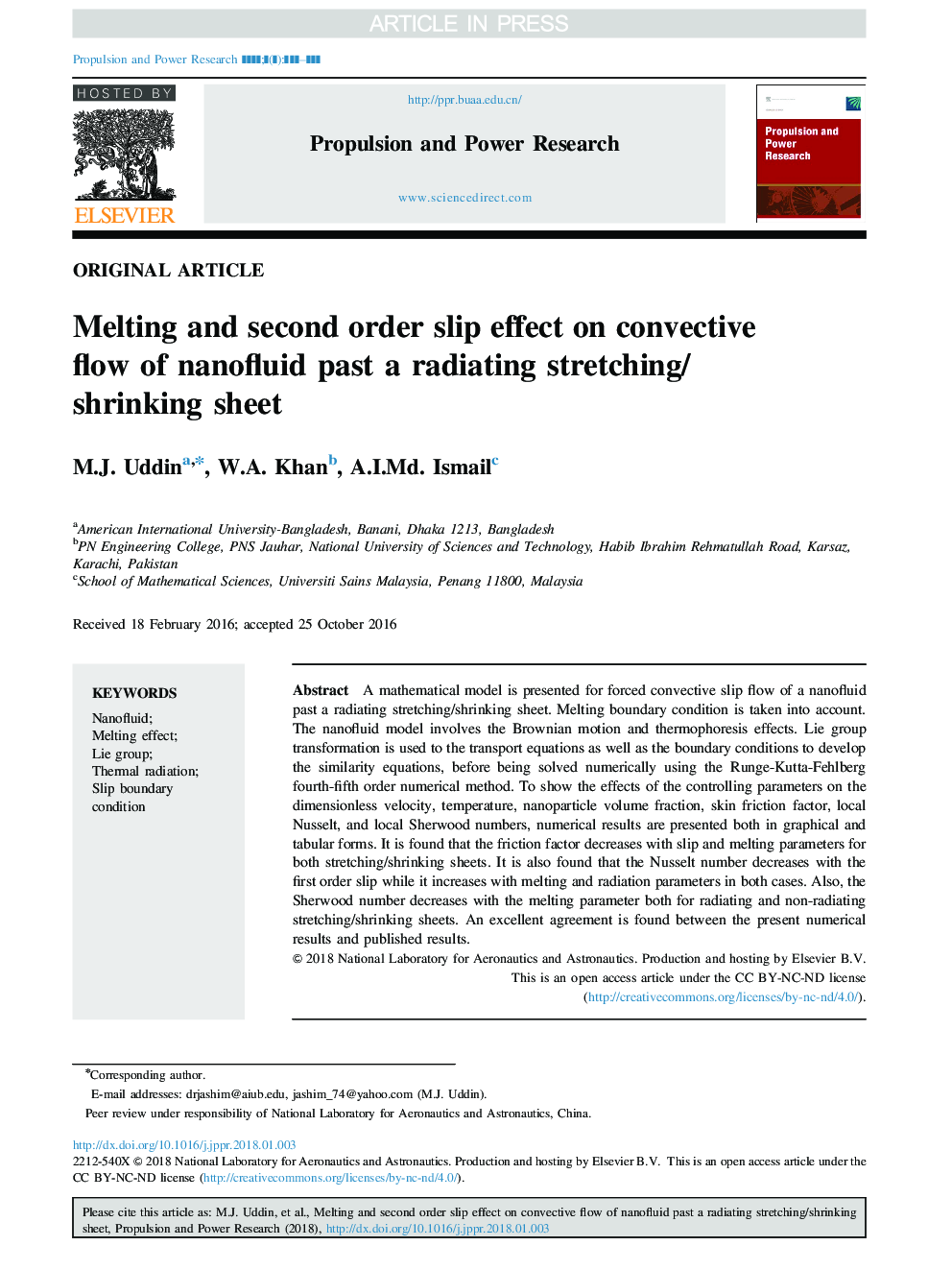| Article ID | Journal | Published Year | Pages | File Type |
|---|---|---|---|---|
| 8059128 | Propulsion and Power Research | 2018 | 12 Pages |
Abstract
A mathematical model is presented for forced convective slip flow of a nanofluid past a radiating stretching/shrinking sheet. Melting boundary condition is taken into account. The nanofluid model involves the Brownian motion and thermophoresis effects. Lie group transformation is used to the transport equations as well as the boundary conditions to develop the similarity equations, before being solved numerically using the Runge-Kutta-Fehlberg fourth-fifth order numerical method. To show the effects of the controlling parameters on the dimensionless velocity, temperature, nanoparticle volume fraction, skin friction factor, local Nusselt, and local Sherwood numbers, numerical results are presented both in graphical and tabular forms. It is found that the friction factor decreases with slip and melting parameters for both stretching/shrinking sheets. It is also found that the Nusselt number decreases with the first order slip while it increases with melting and radiation parameters in both cases. Also, the Sherwood number decreases with the melting parameter both for radiating and non-radiating stretching/shrinking sheets. An excellent agreement is found between the present numerical results and published results.
Related Topics
Physical Sciences and Engineering
Energy
Energy Engineering and Power Technology
Authors
M.J. Uddin, W.A. Khan, A.I.Md. Ismail,
